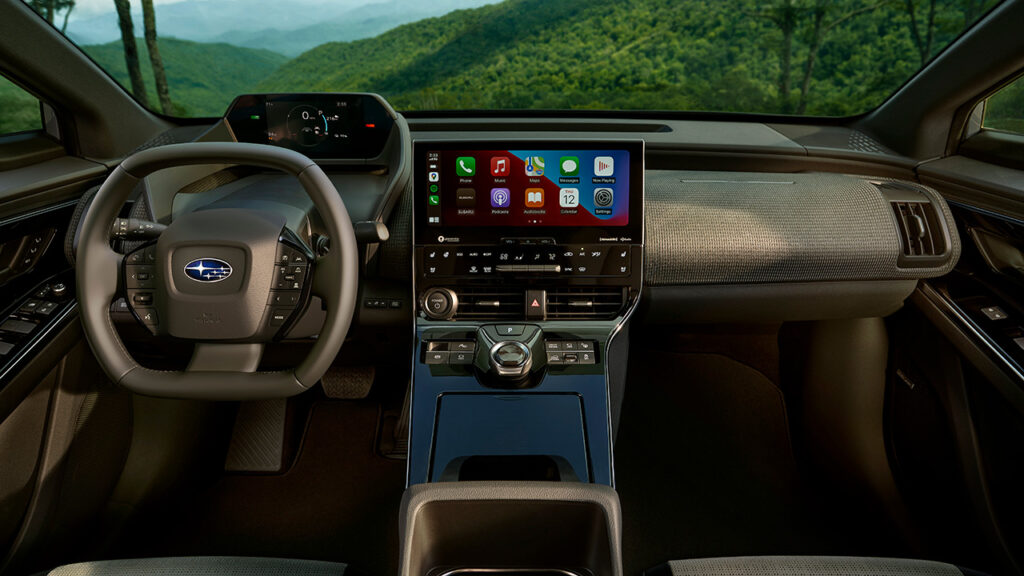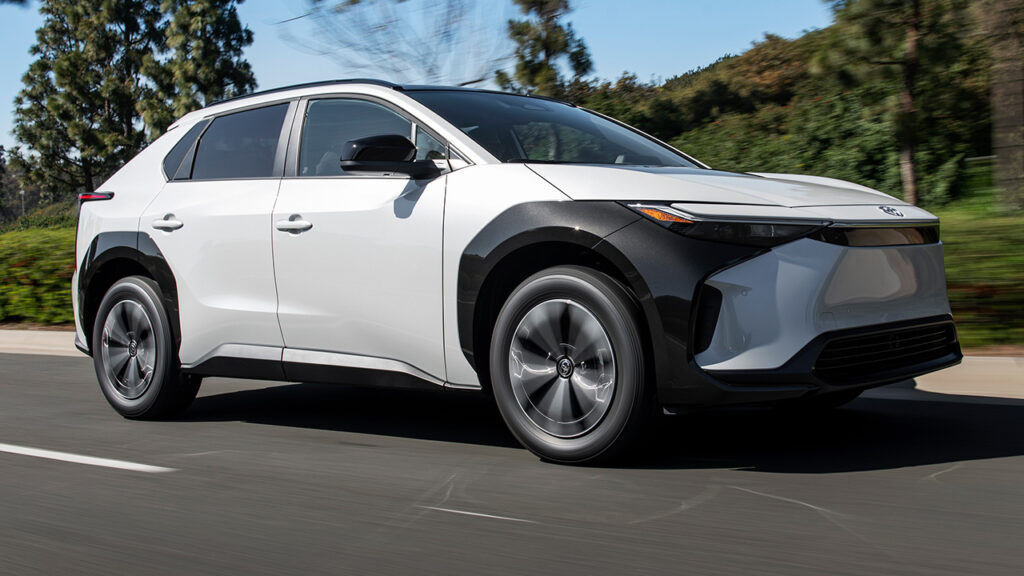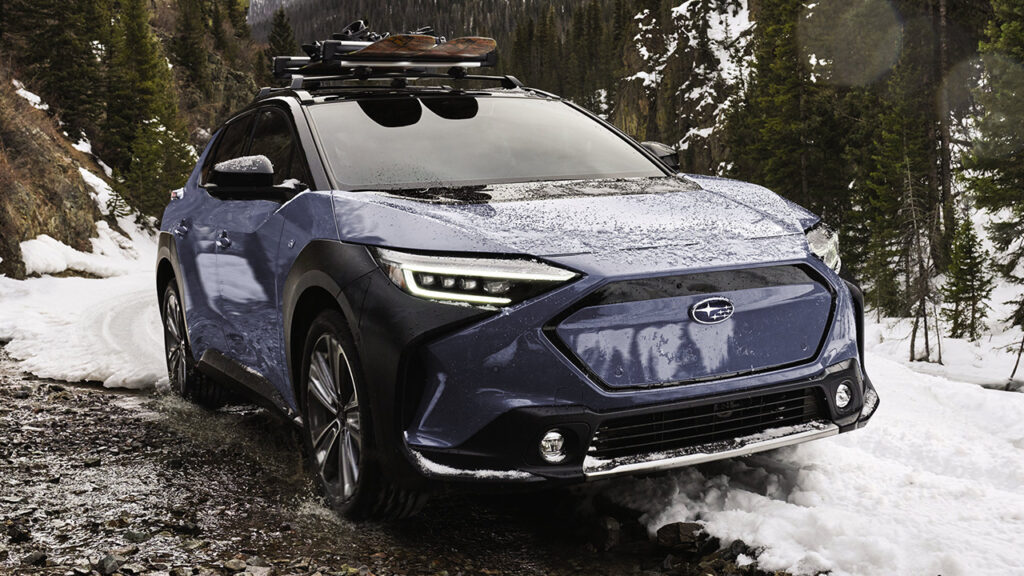There is a pair of new electric vehicles on sale that may make you think you are seeing double.
The Toyota bZ4X and Subaru Solterra look almost exactly alike … because they are. The electric compact SUVs are the product of a joint venture between the brands that sees each get a version of the vehicle with just a few individual tweaks.
The biggest difference on the outside is found at the front, where they have unique styles that include the location of their badges. Toyota’s is on the hood and Subaru’s is in the middle of the faux “grille” design. This is the easiest way to tell them apart.
The bZ4X is available in front-wheel-drive and all-wheel-drive versions, while the Soltera only comes with all-wheel-drive for a better fit with Subaru’s image. Pricing for the Solterra starts at $46,340, which is right in the mix with rivals like the Hyundai Ioniq 5, the Ford Mustang Mach-E and the Tesla Model Y, and goes up to $53,440 for the loaded Touring trim I recently tested. Since it is made in Japan, it doesn’t qualify for the federal $7,500 electric vehicle purchase tax credit, putting it at a disadvantage to some competitors. However, the discount can be applied to leases and both Subaru and Toyota have been offering aggressively priced deals.
One great byproduct of electrification is that EVs tend to have longer wheelbases than internal combustion engine vehicles to accommodate their battery packs. That makes for a roomier cabin on the same overall footprint, and the Solterra is tremendously spacious inside and feels even more so in the Touring thanks to a full panoramic sunroof. Rear-seat passengers get full-size SUV legroom, which may be part of the reason why the bZ4X and Solterra have become popular taxis. I certainly don’t mind when one pulls up.

The driver is presented with a steering wheel with a flat top designed to make it easier to see the high-mounted instrument cluster. Depending on how tall you are, it can be tricky to get a clear view of it without the wheel still blocking a bit. The large 12.3-inch touchscreen in the center of the dashboard is loaded with Toyota’s infotainment system, which has Apple and Android smartphone integration.
The Touring also gets a full array of electronic driver aids that includes a lane-centering adaptive cruise control system that lets you take your hands off of the steering wheel when you’re stuck in traffic at less than 25 mph. It also has a nifty 360-degree camera system with a birds-eye view that virtually makes the vehicle transparent to show you what’s underneath it.

You’ll find a healthy 8.3-inches of ground clearance down there, but the Solterra isn’t truly set up for off-roading like other Subaru models are. The traction control has an X-Mode that is optimized for slippery surfaces, but it doesn’t come with all-terrain tires. The roof rack is rated to hold up to 700 pounds when the vehicle is parked, so you can put your tent up there to stay away from the animals.
You won’t want to venture very far into the wilderness, though, as the Solterra’s driving range is just 227 miles between charges. That’s on the low side for the segment today, but Subaru did make one change this year so the Solterra could be a better road trip companion.

It upgraded the battery conditioning system to reduce the time needed to charge at a public fast charging station from 10 to 80 percent capacity from an estimated 56 minutes to 35 minutes. That’s still short of the new benchmark of around 20 minutes for the fastest-charging vehicles, but a significant improvement if you can’t charge at home overnight. It’s the one thing holding it back from being a great EV, and that’s too bad because the Solterra is a great EV to drive.
Those cabbies sure have it good.

















Discussion about this post